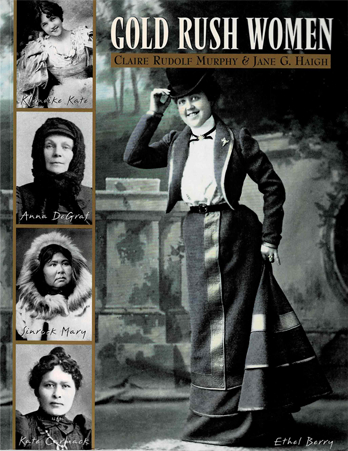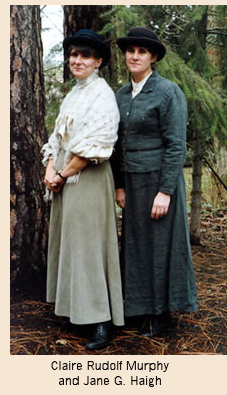
Our Raw Researching at Libraries in Canada & Alaska
The story of the Klondike and Alaska Gold Rushes told through the biographies of 24 women who took part in every aspect of the rush. Including the Athabaskan women who married the first American traders on the Yukon, Kate Shaaw Tláa Carmack, whose family discovered the gold in the Klondike which started the stampede, entrepreneurs Harriet Pullen in Skagway, and Belinda Mulrooney in Dawson City.
Also including Sinrock Mary who sold reindeer meat to the miners in Nome, iconic western pioneer Nellie Cashman, Josephine Earp who was on the Yukon and in Nome, and Fannie Quigley who after the rush to Dawson and Nome, lived for almost forty years in the shadow of Denali
We researched for Gold Rush Women in libraries because there was no internet. Photos were not digitized. We had to travel to far-flung libraries- Dawson city, Whitehorse, Skagway, Circle City, and Central Alaska.
My home archives Elmer Rasmuson Library at University of Alaska Fairbanks - https://archives.library.uaf.edu/
Jane and Claire Rudolf Murphy spent three years researching the stories in their first book together, Gold Rush Women, originally published by Alaska Northwest Books, in 1997.

Q & A with Claire
The native women in Alaska and the Yukon lived a subsistence lifestyle. This information is featured in a box in the book on p.29. The women who came up from Outside were mostly poor due to the depressions of the 1890s. They had to scrimp pennies just to keep their children fed and clothed, and that’s why they came up to the gold rush. Others were leaving bad marriages or looking for a husband. A few women were rich and in search of adventure.

Mostly by supporting each other in friendship. Sometimes the women were tougher than the men. Many women cooked along the way and did laundry, often for very good pay. Some even agreed to marry a lonely man.
These women came from all over the world, so each brought her own culture. Many were immigrants from Europe and didn’t even speak English at first. It was mostly the women who saw to it that churches, schools, hospitals, and libraries were built.
I think our profile of her in the book covers that well. You could also read her book The Bushes and the Berrys, which her sister Tot wrote. It is no longer in print but could be available through interlibrary loans or through a used bookstore. Ethel Berry is featured on the book cover because she and her husband Clarence are two of the few people to get rich in the gold rush and hold onto it. Today Ethel’s descendants own an oil company in California and are still wealthy.
The ones who remained in the North helped start cities or build up those like Fairbanks that already existed. Unlike women Outside, they still took on many jobs that were considered men’s work – running a bank, owning a restaurant, working a mine.
Most definitely. They demonstrated that women could handle almost any job a man could and were tough inside and out. They were too busy up in the North to worry about voting rights and such, but they were role models even if they didn’t know it.